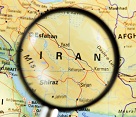Animals That Lived in the Urmia Lake Basin and Became Extinct
Urmia Lake, one of the largest saltwater lakes in the world, was once home to numerous animal species. Due to climate change, excessive water extraction, dam construction,politic issues and geopolitic issues,increased salinity, the lake faced a crisis, causing a significant drop in water levels. These changes disrupted the region’s ecosystem and endangered the survival of many animal species. Below, some of the most important extinct species in this area are examined.
many animal species that once lived in this region are unlikely to return. The destruction of Urmia Lake’s ecosystem serves as a warning for other similar regions, demonstrating that poor natural resource management can have irreversible consequences for the environment. Only through the implementation of sustainable environmental policies, reduced over-extraction of natural resources, and restoration of destroyed habitats can similar ecological disasters be prevented.
1. Artemia Urmiana (Artemia urmiana)
Artemia is a tiny crustacean that was the only creature capable of surviving in the highly saline waters of Urmia Lake. This small organism was a primary food source for many migratory birds, such as flamingos. With the lake’s desiccation, Artemia’s habitat was destroyed, leading to a dramatic decline in its population. Additionally, increased salinity made its survival conditions completely unsuitable, endangering its existence.
2. Flamingos of Urmia Lake
Flamingos were among the migratory birds that visited Urmia Lake annually to feed on Artemia. Due to the depletion of food sources and the loss of surrounding wetlands, these birds could no longer breed in the area. The destruction of their habitat forced many flamingos to migrate to other regions, leading to a significant decline in their population in Urmia.
3. Pelicans and Other Migratory Birds
The wetlands around Urmia Lake were vital habitats for migratory birds such as pelicans, ducks, storks, mallards, and gulls. These birds depended on a food chain in which Artemia played a crucial role. With the loss of food sources and the drying up of wetlands, many of these birds either changed their migration routes or completely disappeared from the region. Some species, due to their strong dependence on Urmia Lake, are no longer observed in this area.
4. Amphibians and Local Reptiles
Various species of frogs, snakes, and turtles that lived in the surrounding areas of the lake vanished due to the depletion of water sources and the destruction of their natural habitats. These animals required moist environments for reproduction and survival, but with declining water levels and increasing land aridity, their numbers drastically decreased. These changes had a direct impact on the region’s biological cycle, leading to reduced biodiversity.
5. Mammals Around the Lake
In the past, animals such as wolves, foxes, jackals, wild boars, and hares inhabited the grasslands and forests around Urmia Lake. However, due to water shortages and the destruction of vegetation cover, these mammals lost their habitats. Some of them migrated to other regions, while others faced significant population declines due to their inability to adapt to the new conditions. Additionally, the reduction of prey and food sources negatively affected the food chain, threatening the survival of some of these animals.
Causes of Wildlife Extinction in the Urmia Lake Basin
Drying of the lake due to dam construction and reduced river inflows
Over-extraction of groundwater, leading to a decline in water levels
Climate change and decreased rainfall, causing water shortages
Increased water salinity, leading to the destruction of Artemia and food chain disruptions
Reduction of food sources for migratory birds and the destruction of surrounding wetlands
Habitat destruction, forcing animals to migrate
Increased human activities such as agriculture and urbanization, leading to the loss of vegetation cover.


